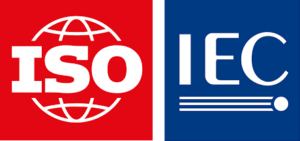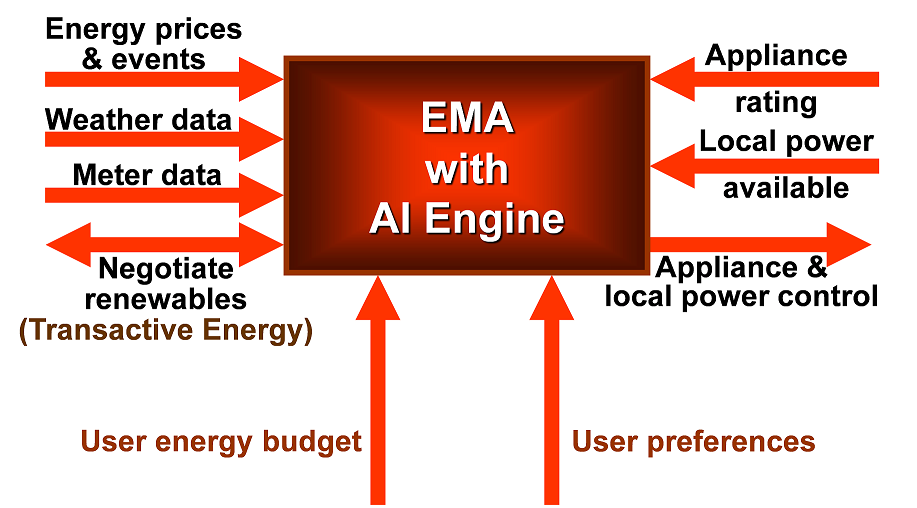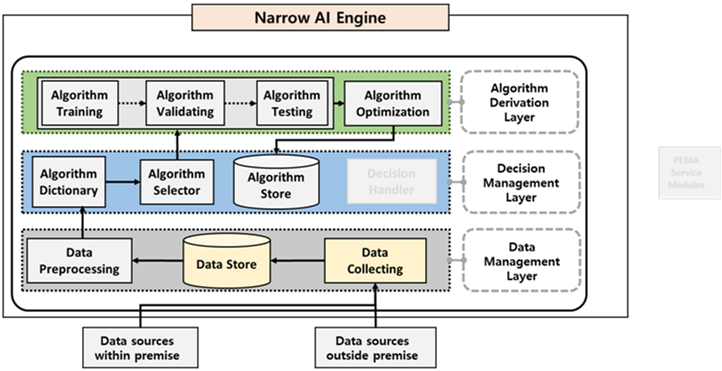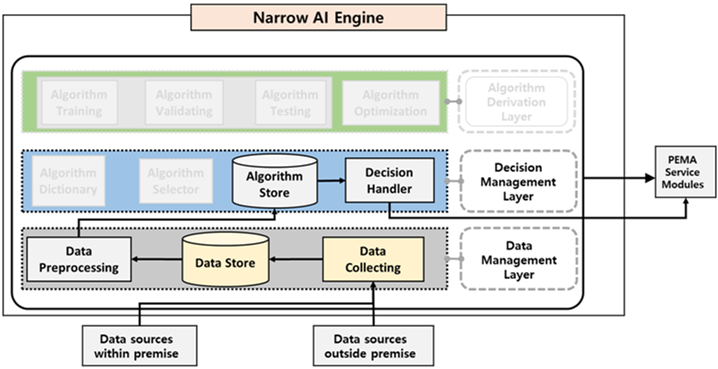This is the sixth article in a year-long series that premiered in November 2021 on international standards for energy management. These standards support the transformation of the power grid from centralized generation to distributed energy resources including local solar, wind, and stored energy in homes and buildings.
 These are voluntary industrial standards developed to promote world trade by a committee I chair for ISO1 and IEC2. They are part of a family of standards for interconnected consumer electronics (home automation) called the “Home Electronic System” (HES)3. I welcome your comments and participation in developing these standards; please visit kenwacks.com for contact data.
These are voluntary industrial standards developed to promote world trade by a committee I chair for ISO1 and IEC2. They are part of a family of standards for interconnected consumer electronics (home automation) called the “Home Electronic System” (HES)3. I welcome your comments and participation in developing these standards; please visit kenwacks.com for contact data.
AI for the Energy Management Agent (EMA)
In previous articles I introduced the international standard Energy Management Agent (EMA). The EMA is a type of consumer electronics product that helps users manage power generated locally, obtained from stored energy, or purchased from a microgrid, an aggregator, neighbors using Transactive Energy (TE), or a public utility. This article explores the data and algorithms needed by the EMA for automated operation while fulfilling the user’s goals. Some of the data processing is performed by hardware and software in the EMA using artificial intelligence (AI) tools that constitute an AI Engine.
There is a movement in the 21st century away from centralized power generation based on fossil fuels toward renewable power sources located close to the user. Central generating stations proliferated because they enabled public utilities to supply nearly all customer demands for electricity. Twentieth century power was usually available, but at a financial and environmental cost.
As we have experienced, central generation has limitations in resiliency in the face of super storms and cybersecurity threats. Even though renewable sources vary with the weather and time of day, renewable power will become more stable and predictable. Renewable power will proliferate with the development of low-cost storage equipment and microgrids to distribute renewable power locally within a community. The EMA is an important automation tool for homes and buildings to deliver electricity to users so availability is nearly equivalent to 20th century power, but with a lower environmental impact. As this article explains, AI is an essential feature of the EMA to manage the allocation of electricity for consumers.
EMA Narrow AI Engine
AI spans a range of computer-based capabilities that seek to mimic human brain functions such as perception, reasoning, and learning. For the EMA we are specifying an AI Engine focused on solving the specific task of energy management by reacting quickly to changes in public and local supplies. This focused AI is called Narrow AI. We are choosing Narrow AI features because they provide more flexibility than an algorithm driven by a decision tree and input data. The AI Engine is embedded in an EMA located in the home or apartment.
The EMA AI Engine is composed of processes that allocate power to the various appliances chosen by the customer while accommodating the customer’s preferences for appliance operation, electric vehicle (EV) charging, energy expenditures (monthly bills), and other goals. For example, some consumers have preferences for electricity produced from renewable or non-carbon sources to mitigate climate change. (My town, functioning as an energy aggregator, already offers this option.)
We are seeking practical AI that can be implemented locally. Local implementation implies that the AI Engine can be executed in consumer or commercial electronics affordable in a competitive marketplace. Also, consumer data are protected by not being shared with a service provider in the cloud, thus reducing the risk of compromising the occupant’s privacy. Energy consumption patterns can reveal considerable information about equipment owned and activities identifiable by location and time.
The AI Framework standard ISO/IEC 15067-3-514 is under development by the ISO/IEC committee of experts that I chair and is being evaluated by the member nations. Additional standards are planned for specifying an AI data model, service procedure, and message flow.
AI Data for Energy Management
The AI Engine is responsible for processing inputs from multiple datasets to determine which appliances to operate and when in order to achieve the customer’s preferences and goals. Figure 1 provides further details about some of the internal and external data that are processed by the AI Engine incorporated into the EMA.

Figure 1 – AI Data for Energy Management
Sources of energy are expanding from a single utility company to include aggregators, renewable sources, community microgrids, and private parties acting as prosumers with TE. Prosumers generate power locally on premises or in a housing complex. Stationary batteries, and possibly mobile batteries, can smooth fluctuations in availability due to the weather or time-of-day.
With the proliferation of wind and solar power, weather data will become increasingly important. Electric energy measurement data are mostly limited to the revenue meter. An AI-based EMA will need real-time consumption data for the whole house from the revenue meter and disaggregated data from appliances and EV charging stations. We are calling this collection of energy measurement equipment an EEMS: Electrical Energy Measuring System (described in the March 2022 article of this series).
Narrow AI Decision Engine
As explained, the type of AI specified in the international standard is narrowly tailored to support energy management.
The AI Engine must first determine an algorithm appropriate for the specific environment considering external and internal energy sources plus storage, appliances, and EV chargers. The algorithm is then optimized to achieve the customer’s goals for appliance operation, energy costs, and any environmental goals given the available data. This is illustrated by the functional block diagram of the Algorithm Derivation Layer in Figure 2.

Figure 2 – Narrow AI Engine in Learning Mode
The AI Engine is preloaded with learning algorithms. A particular algorithm is chosen by the Algorithm Selector based on data in the Algorithm Dictionary about types of algorithms for various energy management services such as TE, renewable power sources, storage, etc. Performance is improved through training and validating with specialized datasets followed by optimizing the trained algorithm to reduce the computation complexity and computational time within the capabilities of the premises EMA. Suitable and validated algorithms are kept in the Algorithm Store.
The Data Management Layer handles the various data sources illustrated in Figure 1 such as energy availability and appliance needs. Data are gathered into the Data Store. The Data Preprocessing stage reconstructs any missing and distorted data.
In summary, the AI algorithm is first optimized for the particular house or building, and re-examined when the operating environment changes. Algorithm selection, training, and testing occur just occasionally. Figure 3 shows the modules that are deployed for operating the energy management functions of the EMA. The PEMA refers to an EMA located within the user’s premises. The Decision Handler module provides direction to the EMA interfaces for allocating energy to appliances and EV chargers to achieve the consumer’s goals.

Figure 3 – Narrow AI Engine in Operating Mode
Benefits of EMA with AI Engine
The AI Engine enables the EMA to fulfill the mission of energy management tailored to a specific home or building environment.
For example, if weather data predict poor conditions for local power generation, such as clouds and reduced winds, the AI Engine Decision Handler might recommend deferring routine tasks like laundry, dimming lights slightly to conserve energy, adjusting thermostat setting for heating and cooling, and delaying EV charging.
The flexibility of an AI Engine can accommodate special situations that might occur with the growth of healthcare services at home. For example:
- The temperature around a sick person might be maintained stable rather than allocating limited or expensive energy to other applications.
- The AI Engine could be programmed to negotiate TE on the customer’s behalf
The AI Engine in the EMA accesses data external to the house or building via the gateway. The international standards for home systems include gateway specifications with provisions for cybersecurity protection. The next two articles in this series on international standards for energy management highlight these HES gateway services.
1.ISO is the International Organization for Standardization, founded in 1947, www.iso.org.
2. IEC is the International Electrotechnical Commission, founded in 1906, www.iec.ch.
Both ISO and IEC are headquartered in Geneva, Switzerland.
3. The Home Electronic System (HES) is the name of the international standards committee officially designated as ISO/IEC JTC 1/SC 25/WG 1:
JTC 1 = Joint Technical Committee 1, entitled Information Technology
SC 25 = Subcommittee 25, entitled Interconnection of Information Technology Equipment
WG 1 = Working Group 1, entitled Home Electronic System
4. ISO/IEC 15067-3-51, Information technology – Home Electronic System (HES) application model – Part 3-51: Framework of a narrow AI engine for a premises energy management system using energy management agents [In progress]
© Copyright 2022 Kenneth P. Wacks
Dr. Kenneth Wacks has been a pioneer in establishing the home systems industry. He delivers clear and practical advice to manufacturers and utilities worldwide on business opportunities, network alternatives, and product developments in IoT and AI for home and building systems. The United States Department of Energy appointed him to the GridWise® Architecture Council to guide the electric industry toward smart grids. For further information, please contact Ken at +1 781 662-6211; [email protected]; www.kenwacks.com.


